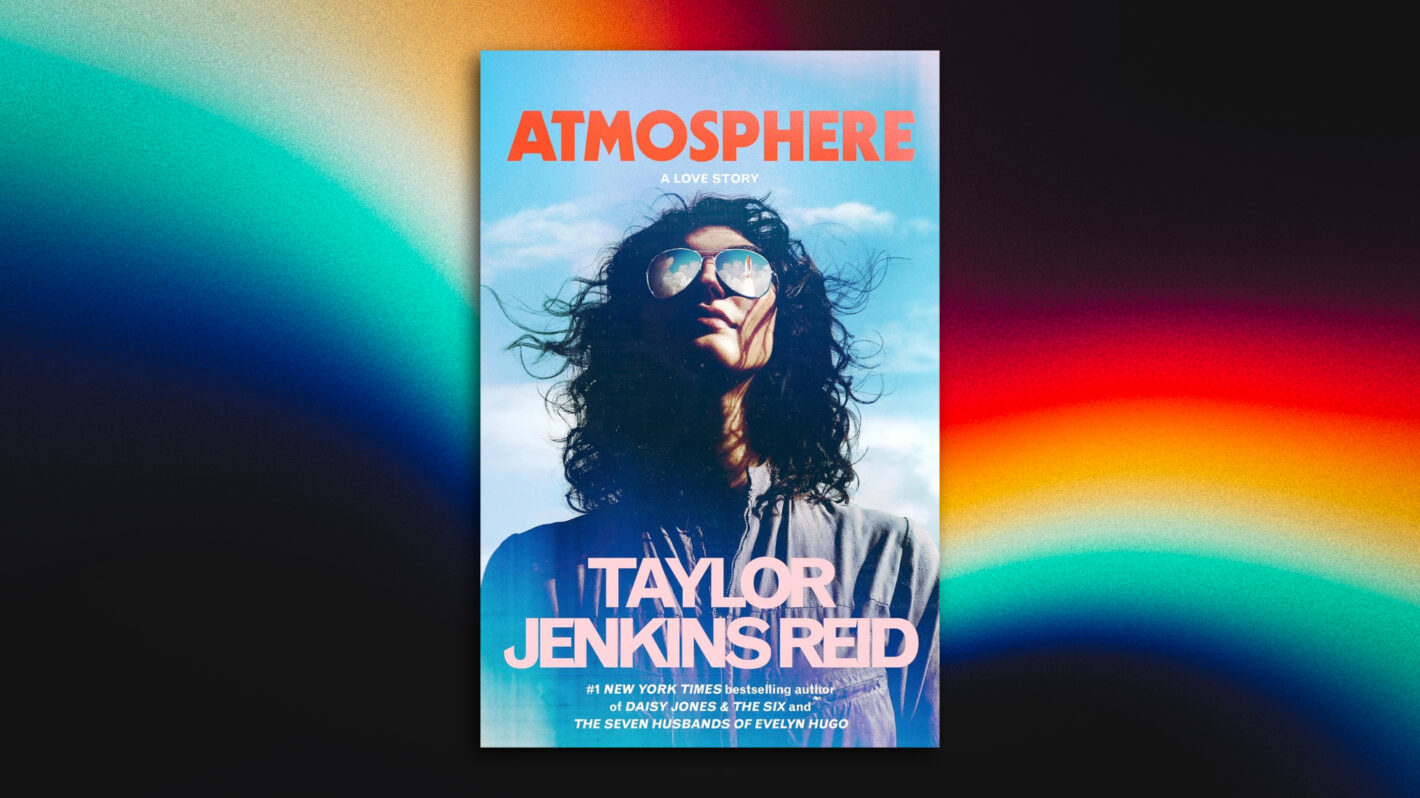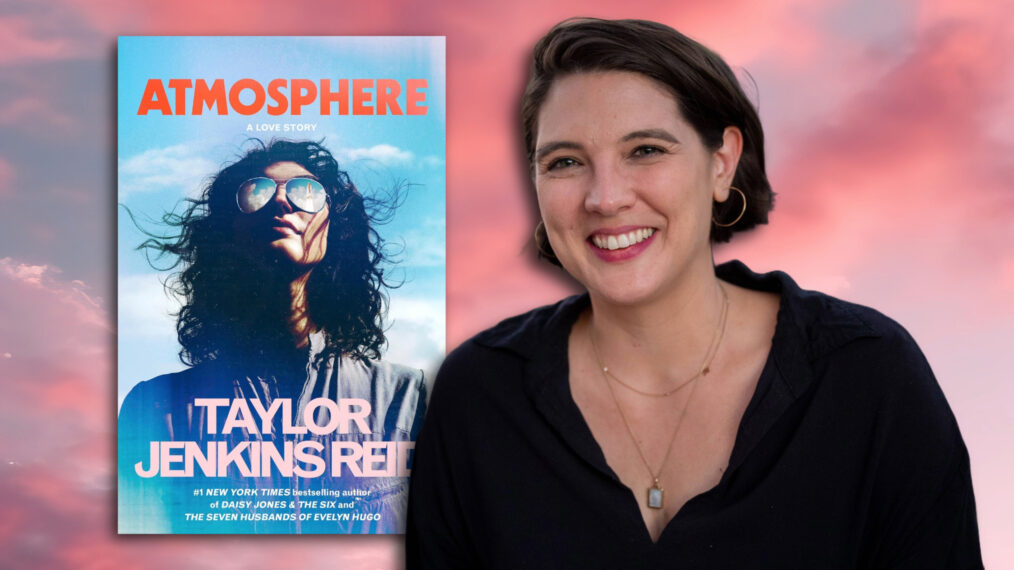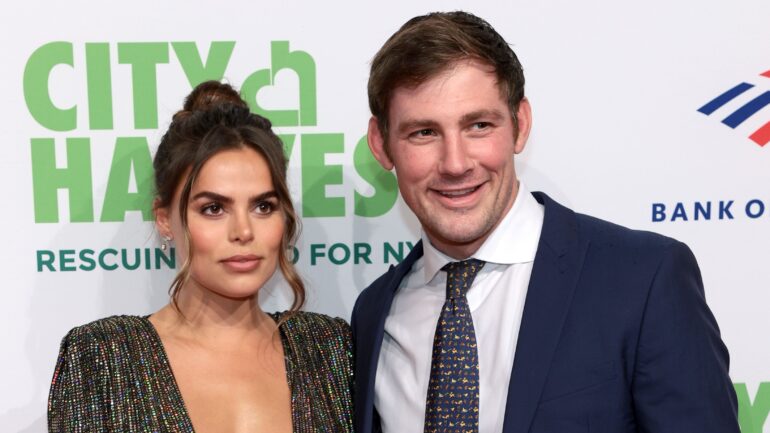Books
‘Atmosphere’ Explained: Did Taylor Jenkins Reid’s New Love Story Land on a Happy Ending?

[Warning: The following contains MAJOR spoilers for Atmosphere by Taylor Jenkins Reid.]
Quick, someone put Sesame Street on the aux and grab us some tissues, because we’re breaking down the ending of Taylor Jenkins Reid’s new celestial romance, Atmosphere: A Love Story.
Bringing Reid’s singularly breathtaking prose into the workplace (think found family vibes, à la the first few seasons of Grey’s Anatomy), Atmosphere follows Joan Goodwin, one of the first women to join NASA’s space shuttle program. Through Joan’s eyes, readers find themselves in 1984, watching a group of astronauts take flight from the Mission Control room. When Joan comes to work that morning, “She is at ease. She is not anxious or terrified or heartbroken.” As Reid so delicately warns, “All of that will come later.”
We quickly learn that the team on the shuttle, called Navigator, is comprised of Commander Steve Hagen, pilot Hank Redmond, and mission specialists John “Griff” Griffin, Lydia Danes, and Vanessa Ford. However, the novel jumps back and forth between Joan’s shift in Mission Control, during the story’s central catastrophe in 1984, and Joan’s training as one of NASA’s new astronaut candidates, from the late ’70s to 1984. This means that by the time Joan meets the members of her cohort, we already know who, to say it lightly, is marked for death.
But don’t worry, Atmosphere is not all gloom and doom. While this book definitely inspired an ugly cry on our part, the story isn’t a bummer by a long shot. No, Joan’s story is TJR’s Titanic, so at its core, Atmosphere is a love story. To learn more about the plot of Taylor Jenkins Reid’s Atmosphere, keep reading!
Who is Joan’s love interest in Atmosphere?
Joan’s main love interest in Atmosphere is Vanessa Ford, one of the other women in Joan’s group in the space shuttle program. Maybe it’s her aviator sunglasses, her tight ponytail, or her effortless coolness, but when Joan first sees Vanessa, she can’t help but think, “That’s an astronaut.”
As she witnesses members of her team couple up, most notably her friends, Donna and Hank, she begins to grow more curious about relationships and marriage, things she had previously assumed were “just not [her] thing.” That is, until the cohort visits a strip club.
In Atmosphere, Taylor Jenkins Reid explores an all-consuming feeling that many members of the queer community experience on some level during their sexual awakening, but rarely see put into words: the intangible sensation that someone of the same sex is so fantastic. You think want to be them because you don’t understand that you want to be with them. For Joan, we see a taste of that when she meets Vanessa, the ideal astronaut, and again when she fantasizes about being as captivating as Raven, the dancer at the club. The second time around, she realizes that this yearning is “something everyone else had discovered long ago.” After that, her unidentified feelings start making a lot more sense.
Joan and Vanessa finally admit their feelings for each other after they become fully fledged astronauts in August 1981. However, in favor of their positions at NASA, they keep their relationship under wraps through the launch of the Navigator.
Why did the shuttle malfunction in Atmosphere?
Everything should be smooth sailing during Navigator’s simple mission to drop a satellite. However, there are two issues with their planned release. First, Griff and Vanessa decide to leave the hatch to the airlock open so that they can watch while the satellite deploys. While this goes against protocol, leaving the hatch open is not a major risk unless something goes wrong with the release. Of course, it does in this case.
The second major issue is that one of the explosive cords holding the satellite in the payload bay detonates incorrectly upon release. This causes explosions that “tear the metal bands around the satellite into pieces,” spreading debris throughout the airlock. Vanessa then realizes that there was a second hit, causing a tear somewhere in the cabin that leaves Steve, Hank, and Lydia unconscious.
What happens at the end of Atmosphere?
Throughout Atmosphere, we see fragments of Vanessa’s efforts to make it back to Earth, with her entire crew alive. However, it quickly becomes clear that there is little chance of anyone besides Vanessa surviving. Soon, only Vanessa and an unconscious Lydia remain, leaving Vanessa faced with a predicament: Either she can spend more time fixing the payload doors, leaving Lydia to die, or deorbit before the doors are fully fixed, taking a gamble to either save or kill them both.
Led by her moral compass, Vanessa decides she cannot live with herself if she leaves Lydia to die, a decision that Joan does not support but understands completely. Before burning to deorbit, Vanessa (still hiding her relationship with Joan) gives a monologue that rivals that of Harry Burns in When Harry Met Sally. She says, “Do you remember when we were arguing about the best song about space? […] I was so intense about it. I feel so silly. I got so mad at Griff.” She continues, “I think both of us—Griff and I— should have been listening to you. You had the right idea the whole time.”
While the rest of the group had argued for songs by David Bowie and Elton John, Joan had championed “I Don’t Want to Live on the Moon” from Sesame Street. Faced with the real possibility of her death, Vanessa realizes, “It’s kind of that simple, isn’t it? You get up here, and then for one reason or another, you realize you want to come home.”
Lucky for Joan, after minutes of startling silence, Vanessa’s voice returns to Joan’s headset, meaning that both Vanessa and Lydia have made it home, and we’re going to need a new box of tissues.
Atmosphere: A Love Story by Taylor Jenkins Reid is out now.






